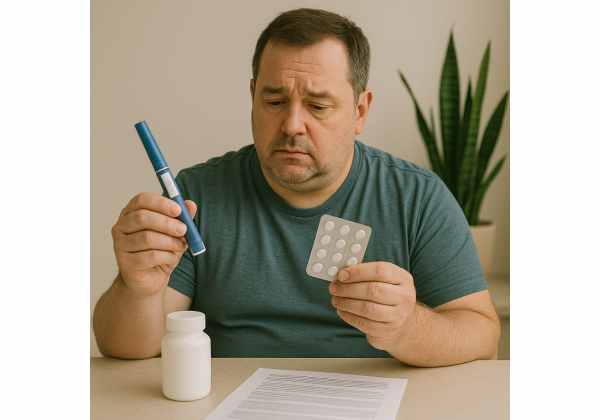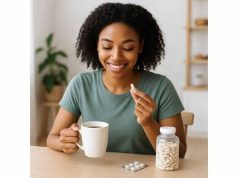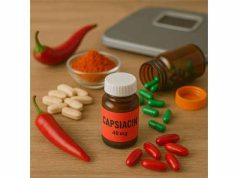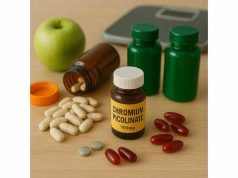
GLP-1 medications help people lose weight by reducing hunger, slowing stomach emptying, and improving blood sugar control. If diet changes alone have not been enough—and your health risks are rising—these injections can be a useful tool when used with structured habits. Expectations matter: results build gradually, side effects are common early on, and long-term success depends on routines you can keep. This guide explains how GLP-1s work, what the first months feel like, who is a good candidate, and how to manage safety. If you are weighing prescriptions alongside nutrition and activity, see our overview of medical options for weight management to understand where these drugs fit.
Table of Contents
- What GLP-1 medications do and who qualifies
- First 12 weeks: what to expect
- Dosing, titration, and monitoring
- Common side effects and fixes
- Safety, contraindications, and cautions
- Results and timelines to expect
- Long-term success and maintenance
- Frequently Asked Questions
What GLP-1 medications do and who qualifies
What they are.
GLP-1 receptor agonists (e.g., semaglutide) mimic a natural gut hormone that helps regulate appetite and blood glucose. In the brain, they dampen hunger and food preoccupation; in the stomach, they slow emptying so meals feel more filling; in the pancreas, they help coordinate insulin with meals.
Brands and uses.
You will see semaglutide marketed under different brand names. Some versions are approved for weight management; others for type 2 diabetes and sometimes used off-label for weight loss under medical supervision. The active ingredient and dosing schedule guide your experience more than the brand name on the box.
Who typically qualifies.
Eligibility usually considers health risk, not just aesthetics. A common threshold is a body mass index (BMI) of 30 or higher, or 27 or higher with a weight-related condition (e.g., prediabetes, type 2 diabetes, hypertension, sleep apnea, fatty liver disease). Clinicians also look at prior attempts, readiness for behavior change, and medication interactions. Coverage rules vary by insurer; documentation of health impact and supervised lifestyle efforts often helps.
How they compare with lifestyle alone.
In clinical use, GLP-1s help more people achieve clinically meaningful loss compared with lifestyle alone. That advantage shows up as fewer cravings, smaller portions, and more consistent deficits. Still, the medicines work with habits, not instead of them. A small calorie deficit, adequate protein, resistance training, steps, and sleep remain the base. For a concise refresher on those pillars, see our guide to safe weight loss basics.
What they do not do.
They do not target “problem areas,” melt fat without a calorie deficit, or let you ignore nutrition indefinitely. After an initial appetite honeymoon, plateaus happen and require the same thoughtful adjustments any successful plan needs.
A note on expectations.
Think in months, not days. Expect an onboarding period with dose adjustments, a gradual drop in food noise, and steady—not dramatic—weekly changes when you pair the medication with structured meals and activity.
First 12 weeks: what to expect
Week 0: planning and baseline.
You and your clinician review history, medications, and goals. Baseline labs often include A1C or fasting glucose, lipids, and (if relevant) liver and kidney function. You set simple guardrails: protein at each meal, a step target, and a sleep plan. You also decide when each weekly dose will fit your schedule.
Weeks 1–4: the gentle start.
Treatment typically begins at a low dose to reduce side effects. Appetite often eases within days. Many people notice they get full faster and leave food on the plate. Nausea, mild reflux, or gassiness are common and usually settle with slower eating, smaller portions, and steady hydration. Aim for regular meals; skipping meals can backfire if you cram calories into a small window and aggravate stomach symptoms.
Weeks 5–8: stepping up.
If you tolerate the start well, your clinician may increase the dose. You may feel a renewed drop in food noise and fewer cravings between meals. This is a good time to refine your routine: add a second resistance session, bump daily steps, and set a protein floor (e.g., 25–35 g per main meal). Side effects can recur after each increase; the same strategies—smaller bites, slower pace, protein-forward meals—help.
Weeks 9–12: settling into a rhythm.
As your dose approaches a maintenance level, appetite effects stabilize. Weight change varies; the trend matters more than any single week. You will likely need to tighten structure around restaurant meals and high-calorie liquids to keep momentum. If nausea lingers, your clinician may pause further increases or step back to a tolerable dose for longer.
Early wins to look for.
- Fewer impulsive snacks or drive-thru stops.
- Naturally smaller portions without feeling deprived.
- More stable energy across the afternoon.
- Better sleep as late-night eating recedes.
Common challenges.
- Overeating rich foods “because I’m not hungry” (they still add up).
- Constipation from slower gastric emptying and lower food volume.
- Social situations with alcohol and shared appetizers.
For a simple overview of where GLP-1s fit among other treatments, skim our primer on how prescription options work so you can ask sharper questions at follow-up.
Dosing, titration, and monitoring
The big idea.
GLP-1s are increased gradually—usually in steps spaced a few weeks apart—to balance effectiveness with tolerability. Many people achieve solid appetite control before the maximum dose; more is not always better if side effects rise.
Weekly injections vs. daily tablets.
Some versions are once-weekly injections using a pen with a small subcutaneous needle; others are daily tablets that must be taken under specific conditions (e.g., on an empty stomach with limited water) to absorb properly. Your clinician will match the formulation to your medical profile and preferences.
If you miss a dose.
General advice is to take it when you remember if it is within a certain window; otherwise, skip and resume your usual schedule. Do not “double up” without medical guidance. Ask your prescriber for exact instructions for your formulation.
Monitoring plan.
- Weight and waist: Track weekly trends, not daily noise.
- Symptoms: Nausea, reflux, fullness, constipation/diarrhea, injection-site issues.
- Glucose: Especially if you have diabetes or prediabetes. Hypoglycemia risk increases when GLP-1s are combined with insulin or sulfonylureas; doses of those drugs may need adjustment.
- Blood pressure and lipids: Often improve with weight loss; your clinician may deprescribe other medications over time.
- Gallbladder symptoms: Right-upper-abdomen pain after fatty meals, nausea, fever. Report promptly.
Food structure to support the medicine.
- Protein floor: 1.6–2.2 g/kg/day (personalize with your clinician).
- Fiber timing: Add soluble fiber before the hungriest meal to smooth portions.
- Liquids: Avoid large, calorie-dense drinks that bypass fullness cues.
- Pace: Eat slowly; stop at “comfortably satisfied,” not stuffed.
Training plan.
Two to four weekly resistance sessions plus daily steps preserves muscle and metabolic rate during weight loss. Progress is steadier when you plan sessions on the calendar instead of “whenever I have time.”
For a practical framework on pairing medication with habits so results last, see our guide to pairing medication with habits.
Common side effects and fixes
Most side effects are gastrointestinal and improve with slower titration, meal structure, and time. Use these targeted strategies.
Nausea or early fullness
- Take smaller bites, pause between bites, and stop at comfortable satiety.
- Favor lean protein and cooked vegetables; limit fried foods and heavy cream sauces during titration.
- Consider ginger tea or sugar-free mints.
- If persistent, ask about pausing dose increases or stepping back temporarily.
Reflux or burping
- Avoid large late-night meals and carbonated drinks.
- Raise the head of your bed slightly; stay upright for 30–60 minutes after eating.
- Discuss short-term antacid options with your clinician if symptoms linger.
Constipation
- Increase fluids; aim for regular sips throughout the day.
- Add gentle movement after meals (10–15 minute walk).
- Use soluble fiber before meals; compare options in our guide to fiber timing.
- If needed, your clinician may recommend an osmotic laxative short-term.
Diarrhea or cramping
- Temporarily reduce fatty and spicy foods.
- Shift to smaller, more frequent meals.
- Reassess recent dose increases; a slower step-up often helps.
Injection-site issues
- Rotate sites (abdomen, thigh, upper arm) and let alcohol swabs dry before injecting.
- Keep pens at recommended temperatures; do not freeze or overheat.
When to call promptly
- Severe or worsening abdominal pain, especially with fever or vomiting.
- Signs of dehydration (dizziness, dark urine) that do not respond to fluids.
- Low blood sugar symptoms if you use insulin or sulfonylureas (shakiness, confusion, sweating).
- Persistent, severe GI symptoms that prevent eating and hydration.
Side effects are a signal to slow down—not to “push through.” Most can be managed with pacing, portion adjustments, and a steady titration plan.
Safety, contraindications, and cautions
GLP-1s are widely used, but they are not right for everyone. Review this checklist with your clinician before starting.
Do not use if you have:
- A personal or family history of medullary thyroid carcinoma (MTC) or multiple endocrine neoplasia type 2 (MEN2).
- A known allergy to the medication or its components.
Use extra caution or specialized guidance if you have:
- A history of pancreatitis or unexplained severe abdominal pain.
- Gallbladder disease or prior gallstones.
- Significant gastrointestinal disorders (e.g., severe gastroparesis).
- Kidney disease—especially if you have had dehydration from vomiting or diarrhea.
- Type 2 diabetes treated with insulin or sulfonylureas, due to hypoglycemia risk when combined.
- Pregnancy or are trying to conceive. GLP-1s are not recommended in pregnancy; discuss a plan to stop well before attempting conception.
- Breastfeeding; safety data are limited—avoid unless your clinician advises otherwise.
- A history of disordered eating; appetite suppression can complicate treatment.
Interactions and monitoring notes
- Review all medications and supplements with your clinician. Slower stomach emptying can affect how quickly some oral drugs are absorbed.
- Report new or worsening mood changes. While not common, any concerning shifts warrant evaluation and may prompt a change in treatment.
- Keep routine labs and follow-ups. Dose adjustments—up or down—are common as your weight, appetite, and labs change.
Informed consent matters.
Understand potential benefits, alternatives, and uncertainties before you start. A two-minute checklist conversation saves months of frustration later.
Results and timelines to expect
When changes start.
Most people notice lower food noise and smaller portions within the first few weeks at a starter dose. The scale often moves slowly at first, then more steadily as the dose and routine stabilize.
What “good progress” looks like.
Across clinical use, many patients reach meaningful single-digit percentage losses within a few months when they pair the medication with structured meals and activity. With sustained adherence and a well-tolerated maintenance dose, double-digit average losses over a year are achievable for a substantial share of users.
Why results vary.
- Dose and tolerability: Some find their “effective dose” below the maximum; others need time to reach it.
- Behavioral context: Protein floor, fiber timing, and resistance training protect muscle and make appetite control translate into fat loss.
- Medical factors: Diabetes control, sleep apnea treatment, and medications that cause weight gain can speed or slow progress.
- Environment: Readily available ultra-processed foods and alcohol can outpace a blunted appetite if not planned for.
Plateaus are normal.
Weight loss is stepwise. When a plateau lasts several weeks, review food structure first: liquid calories, restaurant portions, weekend patterns, and late-night eating. Consider a “maintenance block” (holding weight steady for 4–6 weeks) to consolidate habits before resuming a small deficit.
Comparisons with other options.
Other incretin-based medicines can yield similar or, in some cases, greater average losses. If you are exploring alternatives or next steps, read our plain-English overview of tirzepatide expectations to understand how it differs and when it may be considered.
Beyond the scale.
Expect better post-meal energy, improved glucose metrics if you have diabetes or prediabetes, and—in many cases—lower blood pressure and triglycerides as weight falls. Resistance training and protein help keep strength and function as the number drops.
Long-term success and maintenance
Plan for maintenance from day one.
GLP-1s make a healthy routine easier to follow, but they do not replace one. Decide early which habits you want to keep whether you continue the medicine or not: regular meals with protein, resistance training, steps, and a sleep schedule.
Staying on, stepping down, or stopping.
- Staying on: Many people remain on a maintenance dose to preserve appetite control. Work with your clinician to revisit the lowest effective dose over time.
- Stepping down: Some can reduce to a lower dose once routines are deeply established. Expect appetite to rise somewhat; counter with food structure and activity.
- Stopping: Appetite typically returns toward baseline. A written exit plan—meal schedule, protein targets, fiber timing, and resistance training days—helps prevent rapid regain. Re-starting medicine later is an option; talk with your clinician.
Protect muscle, keep strength.
- Keep a protein floor (e.g., 25–35 g per main meal).
- Lift 2–4 times per week; use progressive overload.
- Spread steps or light cardio across the week to support energy balance and mood.
Social life and travel.
- For restaurants, decide on an anchor (lean protein + vegetables) before you look at the menu; split shared appetizers or skip fried starters.
- For travel, pack protein options (protein packs, jerky, Greek yogurt where available) and fiber to smooth hunger during schedule shifts.
- Keep doses on their usual day; store pens within recommended temperatures.
Mindset.
Aim for consistency, not perfection. Use the medication to reduce friction, then let steady habits deliver the outcome you want. Review goals quarterly and adjust; what worked at month three may need refinement at month nine.
Frequently Asked Questions
Are Ozempic and Wegovy the same medication?
They contain the same active ingredient (semaglutide) but are approved for different primary uses and come in different dosing strengths. Your clinician will prescribe a formulation and dose that match your health goals, medical conditions, and insurance coverage.
How soon will I notice weight changes on a GLP-1?
Appetite often eases within the first weeks at a starter dose. The scale usually moves slowly at first, then more steadily as you reach a well-tolerated maintenance dose and pair it with structured meals, protein, and regular activity. Think in months, not days.
What foods should I avoid while taking a GLP-1?
During titration, rich, fried, and very spicy foods can worsen nausea or reflux. Large, sugary drinks bypass fullness cues and slow progress. Favor lean protein, cooked vegetables, and high-fiber foods; eat slowly and stop at comfortable satisfaction.
Can I drink alcohol on a GLP-1?
Alcohol can add calories quickly and irritate the stomach. If you choose to drink, set a small limit and avoid drinking on an empty stomach. People with pancreatitis risk should avoid alcohol altogether; ask your clinician for personalized guidance.
Do GLP-1 medications cause low blood sugar?
GLP-1s by themselves rarely cause hypoglycemia. The risk increases if you also use insulin or sulfonylureas; your prescriber may adjust those doses. Learn the signs of low blood sugar (shakiness, sweating, confusion) and how to treat it promptly.
Will I regain weight if I stop taking the medication?
Appetite typically returns toward baseline after stopping, and weight regain is common without a maintenance plan. You can reduce regain by keeping a protein floor, planning meals, lifting regularly, and using fiber timing. Some people resume medication if regain persists.
Who should not take a GLP-1 medication?
People with a personal or family history of medullary thyroid carcinoma or MEN2 should not use GLP-1s. Use caution with pancreatitis, gallbladder disease, severe gastroparesis, kidney disease, pregnancy, or while breastfeeding. Review your full history with your clinician.
References
- Once-Weekly Semaglutide in Adults with Overweight or Obesity 2021 (RCT)
- Effect of Continued Weekly Subcutaneous Semaglutide vs Placebo on Weight Loss Maintenance in Adults With Overweight or Obesity 2021 (RCT)
- Two-year effects of semaglutide in adults with overweight or obesity: the STEP 5 trial 2022 (RCT)
- AGA Clinical Practice Guideline on Pharmacological Interventions for Adults With Obesity 2022 (Guideline)
- DailyMed – WEGOVY- semaglutide injection, solution 2024 (Prescribing Information)
Disclaimer
This article is for educational purposes and does not replace personalized medical advice, diagnosis, or treatment. Always consult a qualified clinician before starting, changing, or stopping any medication. Discuss your medical history, current prescriptions, pregnancy plans, and monitoring schedule to ensure safe and effective use.
Share and follow
If this guide helped you understand GLP-1 medications, consider sharing it with someone exploring their options. For steady, evidence-based updates and practical tools, follow us on the social platform you prefer—Facebook, X, or elsewhere. Your questions and feedback are welcome.










